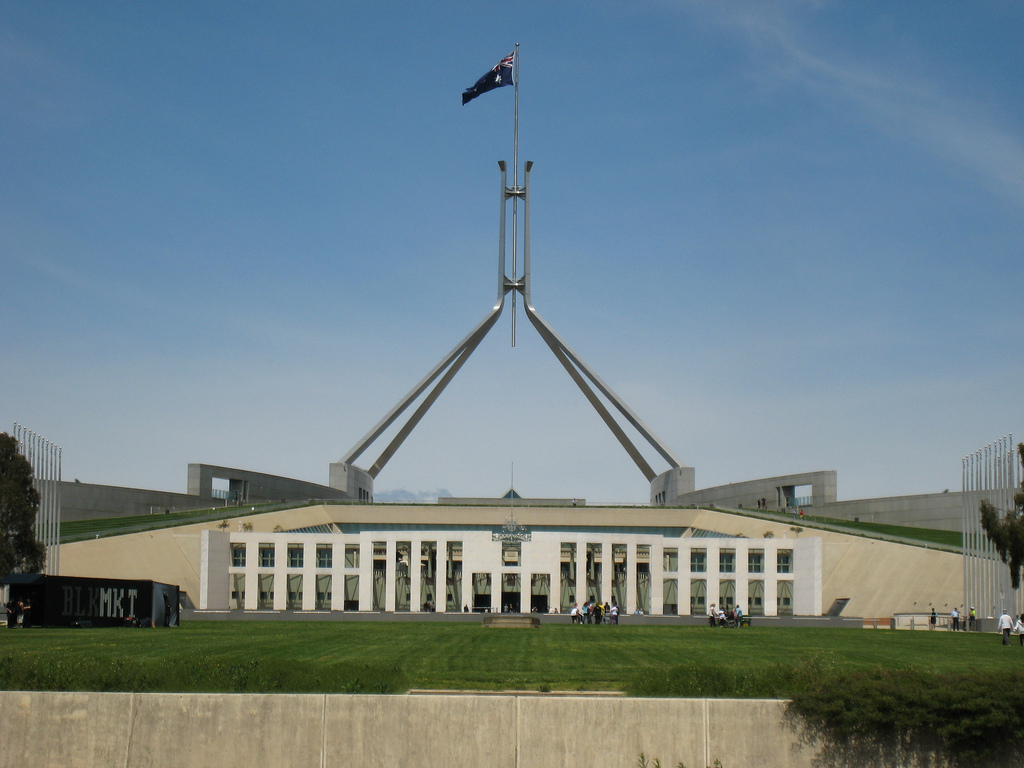Federal public servants already sweating from the deleterious effects of the Abbott government’s hiring crackdown have been given a fresh serve of fear and loathing over their job security.
A Senate Estimates session has heard horror projections from the Australian Public Service Commission (APSC) that the funding equivalent of between 18,500 and 23,500 jobs would have to be found to make up for a pay rise of 4 per cent over three years.
“We had just done that modelling at the one per cent level,” APSC Workplace Relations Group Manager Helen Bull,” told the late sitting Estimates hearing on 24th February. “I think it was approximately 18½ thousand APS6 staff, if it was four per cent over three years.”
“The cost of wage increases and how that plays out really depends on each agency and what they negotiate within their agreements,” Ms Bull continued.
“When we looked at the potential impact on staffing we looked at two classification levels: the largest classification level, which is APS6, and the second largest classification level, which is APS4. The 23½ thousand was in relation to looking at that using the median salary of an APS4,” Ms Bull said in reply to an question on how the Canberra Times arrived at a 23,000 job loss figure.
The latest mooted mass headcount reduction was revealed under questioning of the APSC by the government as Public Service Minister Eric Abetz and the Community and Public Sector Union (CPSU) square off in in a battle over pay and conditions as the countdown to the expiry of the public service’s main industrial instrument set for the end of the financial year.
Clearly sensing the potential to curb union influence in the public sector and deal a blow to its opponents, the Abbott government has essentially offered the public servants a pay freeze unless productivity increases and conditions are traded away in return for salary increases.
In case public servants missed Senator Abetz’s hard line message the first time, the government has now generated fresh body count figures to frame the already gruesome picture it is trying to paint on pay and conditions.
However the present numbers on potential cumulative federal job losses now in circulation are now so big that they would likely cause the public service such severe disruption that it would not be able to carry out its functions.
At present, Labor’s previous efficiency dividend is calculated to remove around 14,500 jobs.
Added to that are Coalition election promises to axe another 12,000 jobs, a pledge that has been temporarily parked at the secretive Commission of Audit to buy some time before the Budget.
So when a further 23,500 potentially lost jobs are added to existing slated cuts of 26,500, the total figure comes to a chillingly round 50,000 — or ten times the latest cuts flagged by Qantas.
To put the scale of such projected cuts into context, Australia’s present unemployment rate as calculated by the Australian Bureau of Statistics is 6.0 per cent with the total number of unemployed being estimated at 728,600 in January (seasonally adjusted).
There’s little doubt that cuts of 50,000 could certainly nudge the unemployment rate visibly higher, especially if they coincide with big job losses ain the automotive and aviation sectors.
Real estate agents in the national capital won’t be putting the potential 50,000 job losses figure up in lights either.
Given the Australian Capital Territory has an estimated total population of just over 383,000, the implications of such large cuts are negative to say the least.
After more than 15 years of growth, the present visual hallmark of the Canberra real estate market are suburban ‘For Lease’ signs for elevated levels of vacant properties.
That over supply has been amplified by a glut of strata property hitting the market after property developers moved to grab tracts of land released onto the market or existing suburbs zoned for redevelopment — a far cry from the rental crunch of a few years ago.
However the chances of the CPSU buckling to pressure tactics are not stacked in the government’s favour. The union has already made capital out of the projected job losses as a recruiting tool, particularly after the government was forced to back away from its promise of “natural attrition” being used over retrenchments.
Given that the scale of all the cuts put together is effectively unworkable — for the government as much as the public service whose job it is to carry out the orders of the government of the day — there is similarly no incentive to concede ground.
If the big cuts do materialise, it could be a much rougher than anticipated start for the policies spelled out in the Abbott government’s first Budget, even before the prospect of industrial action.






Leave a Reply